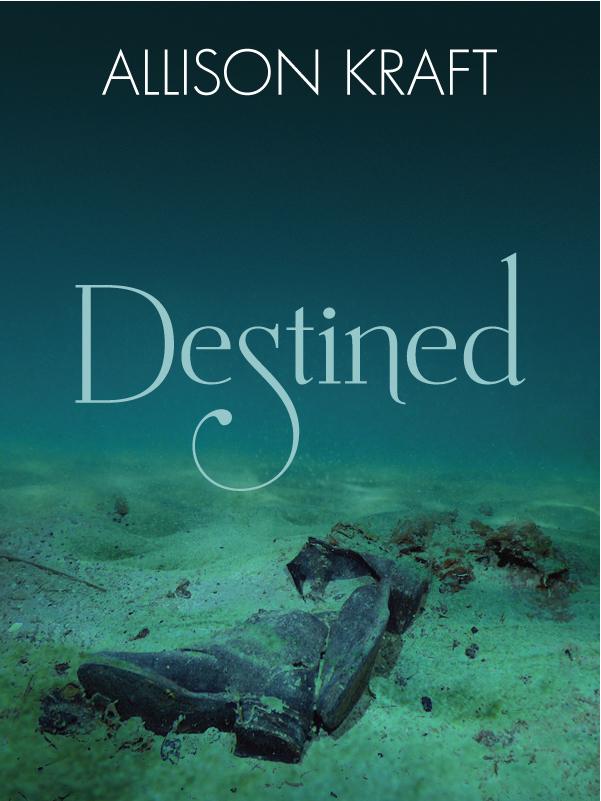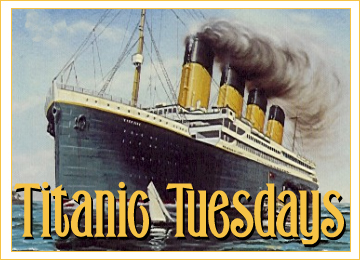
Every now and then in these Titanic Tuesdays posts, I'd like to highlight a particular passenger I included in Destined. Most were only used as background characters: a name mentioned here or there, but not much else. But one of the main secondary characters I used was William H. Harbeck. He was an acquaintance of Noelle's roommate, Henriette Yrois, though their relationship was somewhat of a mystery. In order to stay as true as possible to the real person, I carried that mystery over into Destined, choosing not to define them as romantically involved.
Some of this will be a spoiler for the book, but I will clearly mark where the spoilery section begins, so you can stop reading if you have not yet read Destined and wish to avoid learning William's fate.
When I was looking for a roommate for Noelle, I wanted to be sure I chose someone that would be interesting as well as have no direct living relatives today. Since I cannot know what a person in 1912 was really like, chances are pretty good my version of them won't be very accurate. The last thing I want is to inadvertently offend someone's descendants, so to be safe, I looked for people that wouldn't have any immediate family left. In Henriette's case, there is so little known about her, I really can't be sure she has no one living now: I can only make educated assumptions that she does not. As for William, more is known about him, and I was able to peek into his family tree. Genealogy is an interest of mine, and I enjoy researching people’s ancestry.
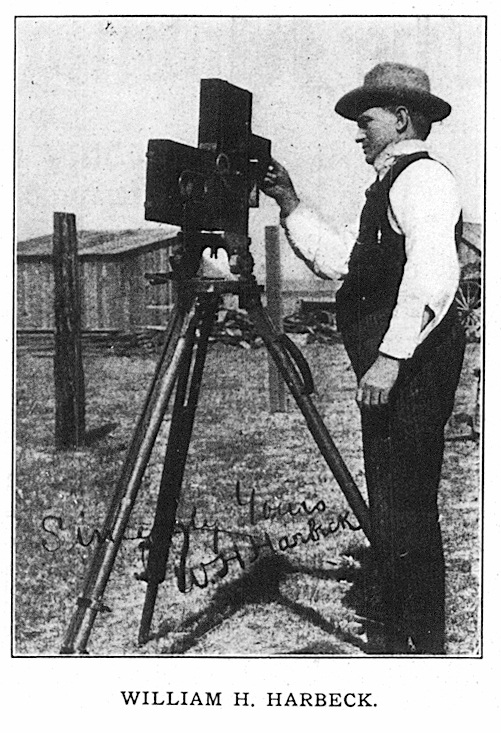 William H. Harbeck was born somewhere between 1865 and 1868 in Ohio. I was never able to find his official birth record, so can only go by census records and his death certificate. On the 1880 census, his age is listed as 14 (making him born around 1866). He was on two censuses in 1900, one in Ohio with his family, where his birth is given as Sept. 1863 (I believe incorrectly, as this is also his wife's birth month/date) and one in Colorado, where he was working for a newspaper and living alone, where his birth is given as December 1866. He is again on two censuses in 1910: one in Ohio, where his age is listed as 45 (birth year around 1865), and another in Seattle where he's listed as 42 (born 1868), living with his wife, Kate (whose recorded age is 9 years too young). We know that William lived in Seattle in the early part of the 1900s, because he had a film studio there, and some sources have said Kate moved with him. It's possible that he had two homes around that time: one in Seattle for his business, and one in Ohio with his family. Kate may have moved back and forth, as their adult sons are only listed on the Ohio census (where Kate is also listed, this time with the correct age). Both his death certificate and tombstone give his birth year as 1868. It’s a mystery, but as age questions go, I’ve seen stranger: one of my own ancestors was born in 1819, yet was always recorded as born in 1830 on census records when his wife (who was born in 1836) was alive. Once she had passed away, his birth year goes back to 1819. All I can figure is he lied to his wife about his true age, as she was most likely the one answering the census taker’s questions.
William H. Harbeck was born somewhere between 1865 and 1868 in Ohio. I was never able to find his official birth record, so can only go by census records and his death certificate. On the 1880 census, his age is listed as 14 (making him born around 1866). He was on two censuses in 1900, one in Ohio with his family, where his birth is given as Sept. 1863 (I believe incorrectly, as this is also his wife's birth month/date) and one in Colorado, where he was working for a newspaper and living alone, where his birth is given as December 1866. He is again on two censuses in 1910: one in Ohio, where his age is listed as 45 (birth year around 1865), and another in Seattle where he's listed as 42 (born 1868), living with his wife, Kate (whose recorded age is 9 years too young). We know that William lived in Seattle in the early part of the 1900s, because he had a film studio there, and some sources have said Kate moved with him. It's possible that he had two homes around that time: one in Seattle for his business, and one in Ohio with his family. Kate may have moved back and forth, as their adult sons are only listed on the Ohio census (where Kate is also listed, this time with the correct age). Both his death certificate and tombstone give his birth year as 1868. It’s a mystery, but as age questions go, I’ve seen stranger: one of my own ancestors was born in 1819, yet was always recorded as born in 1830 on census records when his wife (who was born in 1836) was alive. Once she had passed away, his birth year goes back to 1819. All I can figure is he lied to his wife about his true age, as she was most likely the one answering the census taker’s questions.
What I was able to find about William's early life is very little. His father was John S. Harbeck, born May 19, 1836 in New York, the son of John S Harbeck and Jane Shaw. William's mother was Margaret Milligan, daughter of William Milligan and Rebecca Beckford. She was born around 1842 in Ohio. The Harbecks moved from New York to Ohio sometime between 1840 and 1850. As far as I have found, William was an only child. His mother, Margaret, died December 4, 1885 in Toledo. His father, John, was a Private in the Civil War, and remarried around 1890 to a woman named Ida. John & Ida moved to Long Beach, California, where John died in 1959 and Ida in 1950. I can only assume the Harbecks are of German descent, but as far back as I've been able to go in their ancestry, they have all been born in the US. There is another branch of Harbecks living at that time in New York, also named John & William: those Harbecks were wealthy men, successful stockbrokers who owned a chain of stores and manufactured staves (not sure what that is, but our John Harbeck in Ohio was a "stave sealer" on one census. A stove, maybe?). I was not able to determine if the wealthy NY Harbecks were related to those in Ohio.
William Harbeck married Catherine (Kate) Stetter on February 16, 1886 in Lucas, Ohio. Kate was the daughter of German parents, George Stetter (1838-1911) and Catherine Braun (1841-1915). Together they had two sons, John Samuel, born April 27, 1887, and Stanley, born February 23, 1892.
William started out in publishing, moving out to Anaconda, Colorado to be the editor for their local newspaper sometime in the 1890s. (Around this time, the wealthy NY Harbecks had a summer home in Colorado. More evidence they were related?) Sometime between 1900 and 1910, he moved to Seattle and started his filmmaking business, and in 1906, he was supposedly the first cinematographer to film the aftermath of the San Francisco earthquake. He then went to work in Yellowstone Park, filming various scenery for a series of films put out by the Selig Company entitled Scenes in Yellowstone Park: the Land of Geysers. He did more filming in the West, in Oregon, Idaho, Utah and Colorado, filming, in his words "mainly railroad scenery." He then went to Mexico to do more railroad filming, and in May 1907, set off for British Colombia to film the Canadian Pacific Railway. By 1909 he had become the CPR's official photographer. One film he shot in Victoria, BC in 1907, Victoria and Vancouver Street and Harbour Scenes, is available to watch online here: http://web.uvic.ca/lancenrd/AViewofVictoria/vic_video/the_ride.php. It’s kind of fascinating. He also filmed a light comedy feature called The Ship’s Husband, about a pair of couple who accidentally swap partners while on one of the CPR’s ferries. (How does one accidentally swap spouses, anyway?)
In 1910 he was becoming well-known as a filmmaker, and was invited to London to screen his films. (Fun fact: he sailed on the Lusitania, another later-doomed ocean liner.) He returned to Europe a few more times, made some contacts there, did more filming in Canada, and eventually finished up his contract with the CPR in 1911. At that point he went to Alaska to film, and around this time Meyer Guggenheim and J.P. Morgan bought up claims for large tracts of land in the territory. While this film was meant to be a scenic tourist film, it apparently raised some political issues as well. In 1912, he was advertising his next project as "Watch for Harbeck's latest motion pictures exposing the Guggenheim interests in Alaska and the Controller Bay grab. Films that will worry Congress and startle the whole United States and probably change the present political map."
As we now know, Benjamin Guggenheim (Meyer's son), was one of the passengers on the Titanic, and went down with the ship. One wonders if the two men ever met up on board. Given Harbeck's apparent criticism of the Guggenheim family business practices, this could have made for some awkward encounters. It was probably for the best that the two men were travelling in different classes. (Another fun fact: the White Star Line was owned by J.P. Morgan, who was supposed to be on her maiden voyage as well, but canceled when he became ill.)
William returned to Europe in early 1912, where he spent a few months traveling around, filming in London, Brussels, Paris and Berlin. On April 1st, he wrote to Kate back home to tell her he would be returning to the US on the Titanic, and would be staying at a hotel in New York City. Some say he was contracted by the White Star Line to film the Titanic's maiden voyage, but no one seems to know for sure. His wife claimed he had filmed the departure at Southampton and was to film scenes on board throughout the voyage, then be taken off the ship in New Jersey and brought to the dock in New York ahead of the ship to film her arrival.
SPOILERS AFTER TIHS PART
Of course, any film William shot while on board went down with his equipment. The last communication he seems to have sent was a letter mailed from the ship, dated April 10th, to Will Day, one of his business partners back in the United States. The letter discussed some equipment he left behind for him and was signed: "Best wishes from Mrs. Harbeck and Yours Truly." Of course, Mrs. Harbeck (Kate) was at home in Toledo at this time, but passing along good wishes from her even if she wasn't with him wouldn't be unusual. The unusual part came when a trade journal reported his arrival in Britain in March 1912 with: "Mr. W.H. Harbeck (accompanied by his wife), motion picture photographer to Canadian Pacific Railroad, arrived from America last week." The same journal repeated this again when he returned to New York on the Titanic. It looks like he was travelling with a mistress who was posing as his wife. Henriette Yrois?
William and Henriette bought their tickets individually, but the ticket numbers were consecutive, suggesting they were purchased at the same time. "Last place of abode" for both was given as London. As I said in my research notes, Lawrence Beesley mentioned seeing them together often in the library, as well as watching William (with "his wife") eagerly filming the Titanic's near-collision with the New York as it pulled away from the Southampton dock. More evidence of their traveling together: when William's body was found, among his possessions was a "lady's bag" (more on that below).
After the sinking, another drama unfolded as an unknown woman from Seattle calling herself "Mrs. Brownie Harbeck" tried to claim William's personal effects from Halifax. A series of letters from both her, Kate and his son, John, are available online for any who wish to read them. (At the Nova Scotia Virtual RMS Titanic Archives) One of the letters from "Brownie" was written on stationery from Harbeck's film company, and identifies the purse found with William’s body as Henriette’s. Apparently, he had a business partner there named Katherine George, and some think the letters may be from her and that she was another mistress. But as with the rest of the Harbeck mysteries, no one really knows.
William's real wife, Kate, never remarried, and passed away in Toledo on May 18, 1940, at the age of 76. Their two sons also never married. John Samuel Harbeck died in Toledo on May 21, 1917 at the age of 30, from pericarditis (inflammation in the sac surrounding the heart). His death certificate notes his occupation as journalism (followed in Dad's footsteps?). Their other son, Stanley, died at age 55 on July 22, 1947. He was also single, and died of cirrhosis of the liver. His death certificate notes his occupation as retired, while on his WWII draft card, he’s noted as unemployed and is living with his aunt, Emma Stetter (Kate's sister who also never married).
Well, that’s my accounting of William Harbeck and his family. I keep meaning to make these posts shorter, but that never seems to work out. I can’t seem to help myself: I’m long-winded.
-----
Most research for this taken from The Titanic and Silent Cinema as well as genealogy research on Ancestry.com and Family Search.
 Die For Me by Amy Plum
Die For Me by Amy Plum


 William H. Harbeck was born somewhere between 1865 and 1868 in Ohio. I was never able to find his official birth record, so can only go by census records and his death certificate. On the 1880 census, his age is listed as 14 (making him born around 1866). He was on two censuses in 1900, one in Ohio with his family, where his birth is given as Sept. 1863 (I believe incorrectly, as this is also his wife's birth month/date) and one in Colorado, where he was working for a newspaper and living alone, where his birth is given as December 1866. He is again on two censuses in 1910: one in Ohio, where his age is listed as 45 (birth year around 1865), and another in Seattle where he's listed as 42 (born 1868), living with his wife, Kate (whose recorded age is 9 years too young). We know that William lived in Seattle in the early part of the 1900s, because he had a film studio there, and some sources have said Kate moved with him. It's possible that he had two homes around that time: one in Seattle for his business, and one in Ohio with his family. Kate may have moved back and forth, as their adult sons are only listed on the Ohio census (where Kate is also listed, this time with the correct age). Both his death certificate and tombstone give his birth year as 1868. It’s a mystery, but as age questions go, I’ve seen stranger: one of my own ancestors was born in 1819, yet was always recorded as born in 1830 on census records when his wife (who was born in 1836) was alive. Once she had passed away, his birth year goes back to 1819. All I can figure is he lied to his wife about his true age, as she was most likely the one answering the census taker’s questions.
William H. Harbeck was born somewhere between 1865 and 1868 in Ohio. I was never able to find his official birth record, so can only go by census records and his death certificate. On the 1880 census, his age is listed as 14 (making him born around 1866). He was on two censuses in 1900, one in Ohio with his family, where his birth is given as Sept. 1863 (I believe incorrectly, as this is also his wife's birth month/date) and one in Colorado, where he was working for a newspaper and living alone, where his birth is given as December 1866. He is again on two censuses in 1910: one in Ohio, where his age is listed as 45 (birth year around 1865), and another in Seattle where he's listed as 42 (born 1868), living with his wife, Kate (whose recorded age is 9 years too young). We know that William lived in Seattle in the early part of the 1900s, because he had a film studio there, and some sources have said Kate moved with him. It's possible that he had two homes around that time: one in Seattle for his business, and one in Ohio with his family. Kate may have moved back and forth, as their adult sons are only listed on the Ohio census (where Kate is also listed, this time with the correct age). Both his death certificate and tombstone give his birth year as 1868. It’s a mystery, but as age questions go, I’ve seen stranger: one of my own ancestors was born in 1819, yet was always recorded as born in 1830 on census records when his wife (who was born in 1836) was alive. Once she had passed away, his birth year goes back to 1819. All I can figure is he lied to his wife about his true age, as she was most likely the one answering the census taker’s questions.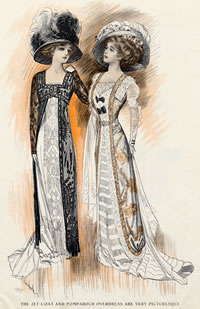
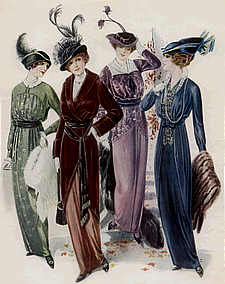

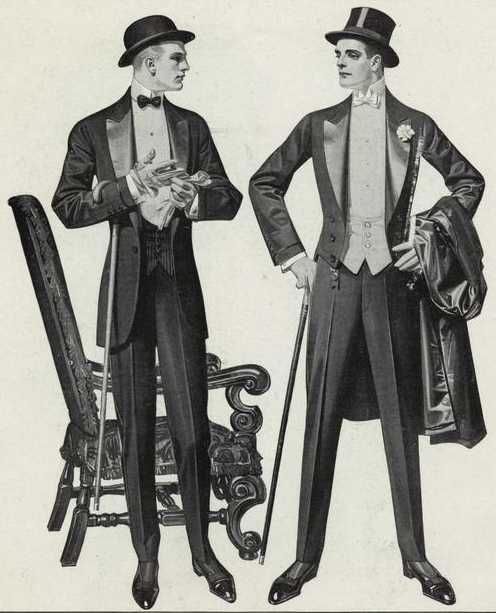
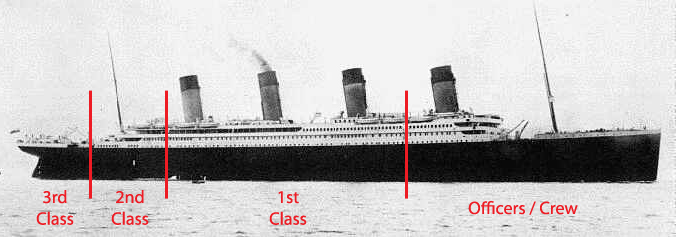
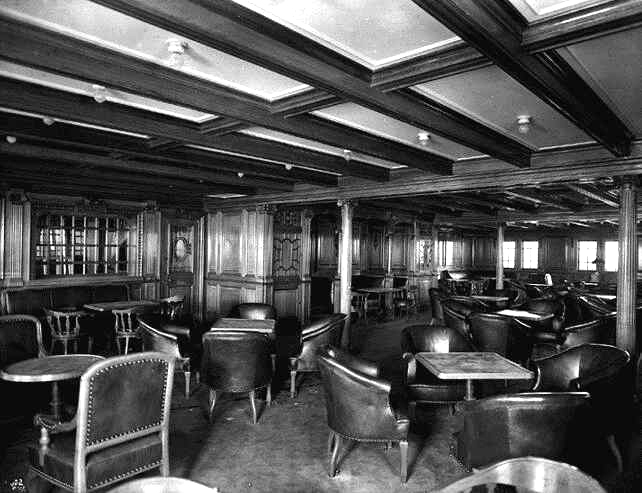 Life in Second Class was still pretty good, despite having such a small area to call their own. The few common areas they had were nicely-appointed and, as mentioned before, on par with the First Class rooms on other ships. On B Deck, they had a Smoking Room where the men would gather after dinner for drinks and cards and other manly pursuits. It was very masculine, with oak paneling on the walls and oak furniture upholstered with dark green Moroccan leather. The floors were tiled in patterned linoleum.
Life in Second Class was still pretty good, despite having such a small area to call their own. The few common areas they had were nicely-appointed and, as mentioned before, on par with the First Class rooms on other ships. On B Deck, they had a Smoking Room where the men would gather after dinner for drinks and cards and other manly pursuits. It was very masculine, with oak paneling on the walls and oak furniture upholstered with dark green Moroccan leather. The floors were tiled in patterned linoleum.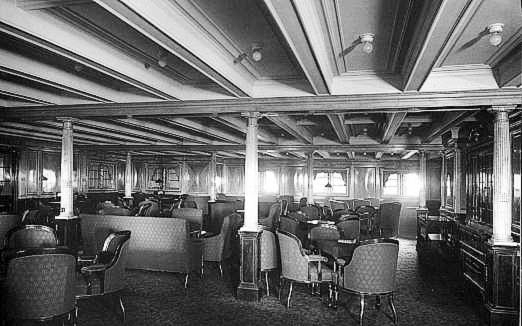 Since the Smoking Room was a "men only" area, that left only the Library/Lounge for the women, located just below it on C Deck. Both men and women congregated here daily to relax, write letters, play cards and watch the 2nd class children play on the covered promenade outside the windows. This large room was lighter than the Smoking Room, paneled in sycamore with mahogany furniture. The chairs were upholstered in a (possibly green) tapestry, the floors were were covered in a rich Wilton (possibly brown) carpet, green silk curtains framed the windows, and there was a large, glass-fronted bookcase at one end of the room containing what was described as an impressive collection of books.
Since the Smoking Room was a "men only" area, that left only the Library/Lounge for the women, located just below it on C Deck. Both men and women congregated here daily to relax, write letters, play cards and watch the 2nd class children play on the covered promenade outside the windows. This large room was lighter than the Smoking Room, paneled in sycamore with mahogany furniture. The chairs were upholstered in a (possibly green) tapestry, the floors were were covered in a rich Wilton (possibly brown) carpet, green silk curtains framed the windows, and there was a large, glass-fronted bookcase at one end of the room containing what was described as an impressive collection of books.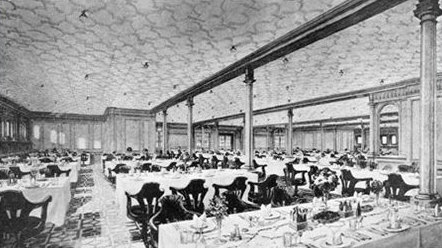
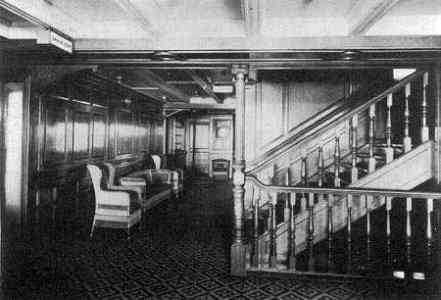 While First Class had 3 elevators at their disposal, Second Class only had one (Third Class had none), so the stairs were most likely their main method of access. Railings were light oak, carpet was red, and each landing held some seating for those who wished to rest. There were two sets of these staircases. The forward stairs, in the front portion of the Second Class section of the ship, ran from the Boat Deck down to F Deck, and had the elevator between the two flights. The aft stairs, set at the back end of the Second Class section of the ship, didn't start until B Deck and went down to G Deck.
While First Class had 3 elevators at their disposal, Second Class only had one (Third Class had none), so the stairs were most likely their main method of access. Railings were light oak, carpet was red, and each landing held some seating for those who wished to rest. There were two sets of these staircases. The forward stairs, in the front portion of the Second Class section of the ship, ran from the Boat Deck down to F Deck, and had the elevator between the two flights. The aft stairs, set at the back end of the Second Class section of the ship, didn't start until B Deck and went down to G Deck.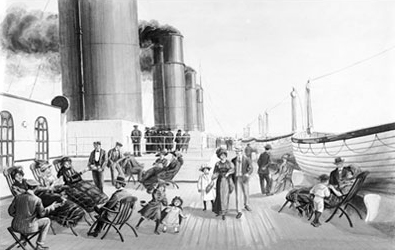 Outdoor space for the Second Class was plentiful, more than they would have had on other ships. In addition to the Boat Deck and B Deck promenades, they also had a covered/enclosed space outside the library on C Deck. If the weather was good, passengers would gather out on these promenades and chat, play games, or people watch. They could have drinks brought out to them here as well, since their class didn't have a café. (Delivery could also be made to the library if they so chose.)
Outdoor space for the Second Class was plentiful, more than they would have had on other ships. In addition to the Boat Deck and B Deck promenades, they also had a covered/enclosed space outside the library on C Deck. If the weather was good, passengers would gather out on these promenades and chat, play games, or people watch. They could have drinks brought out to them here as well, since their class didn't have a café. (Delivery could also be made to the library if they so chose.)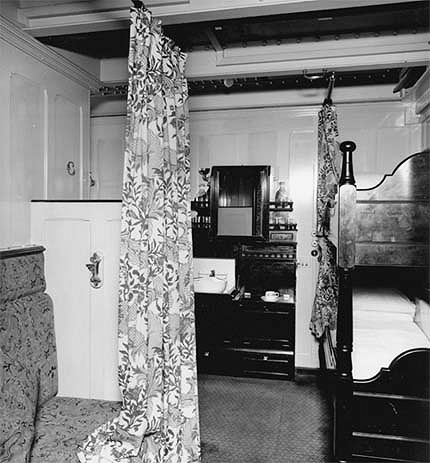 The cabins in Second Class ranged in luxury, some being almost as nice as First Class, others being nearly as stripped down as Third. But most seem to fall into the range of the cabin I assigned Noelle and Henriette. The photo to the left, most likely taken on her sister ship, Olympic, is the closest to what I imagine cabin E-103 would be. Like the library, furniture was mahogany. Each room had a fold-down wash basin with running water: both fresh and salt. Floors were usually tiled in linoleum, and each had an electric bell to ring the steward and heaters for cold nights. Cabin walls were enameled in white, and many of the surviving passengers would note that they could still smell the fresh paint. Below is an illustration of what a Second Class cabin might look like, taken from a postcard of the time. Just take out the lady and her little girl and put Noelle in her place, and you have the opening scene of
The cabins in Second Class ranged in luxury, some being almost as nice as First Class, others being nearly as stripped down as Third. But most seem to fall into the range of the cabin I assigned Noelle and Henriette. The photo to the left, most likely taken on her sister ship, Olympic, is the closest to what I imagine cabin E-103 would be. Like the library, furniture was mahogany. Each room had a fold-down wash basin with running water: both fresh and salt. Floors were usually tiled in linoleum, and each had an electric bell to ring the steward and heaters for cold nights. Cabin walls were enameled in white, and many of the surviving passengers would note that they could still smell the fresh paint. Below is an illustration of what a Second Class cabin might look like, taken from a postcard of the time. Just take out the lady and her little girl and put Noelle in her place, and you have the opening scene of 

 Long time, no blog. Last week was hell at the day job, so I didn’t have as much free time to blog or do much of anything else online. We had a nasty lightning strike at work (the joy of living in Florida) that fried our phone lines, killed our network server and generally wreaked havoc with everything else. As the closest thing to an IT person they have, it somehow landed on me to oversee a lot of the repairs, and as such I was stuck at the office more than usual. Good for the paycheck, bad for the writing career. But it seems to finally be winding down now, so I’m trying to get back in the groove of things.
Long time, no blog. Last week was hell at the day job, so I didn’t have as much free time to blog or do much of anything else online. We had a nasty lightning strike at work (the joy of living in Florida) that fried our phone lines, killed our network server and generally wreaked havoc with everything else. As the closest thing to an IT person they have, it somehow landed on me to oversee a lot of the repairs, and as such I was stuck at the office more than usual. Good for the paycheck, bad for the writing career. But it seems to finally be winding down now, so I’m trying to get back in the groove of things.







